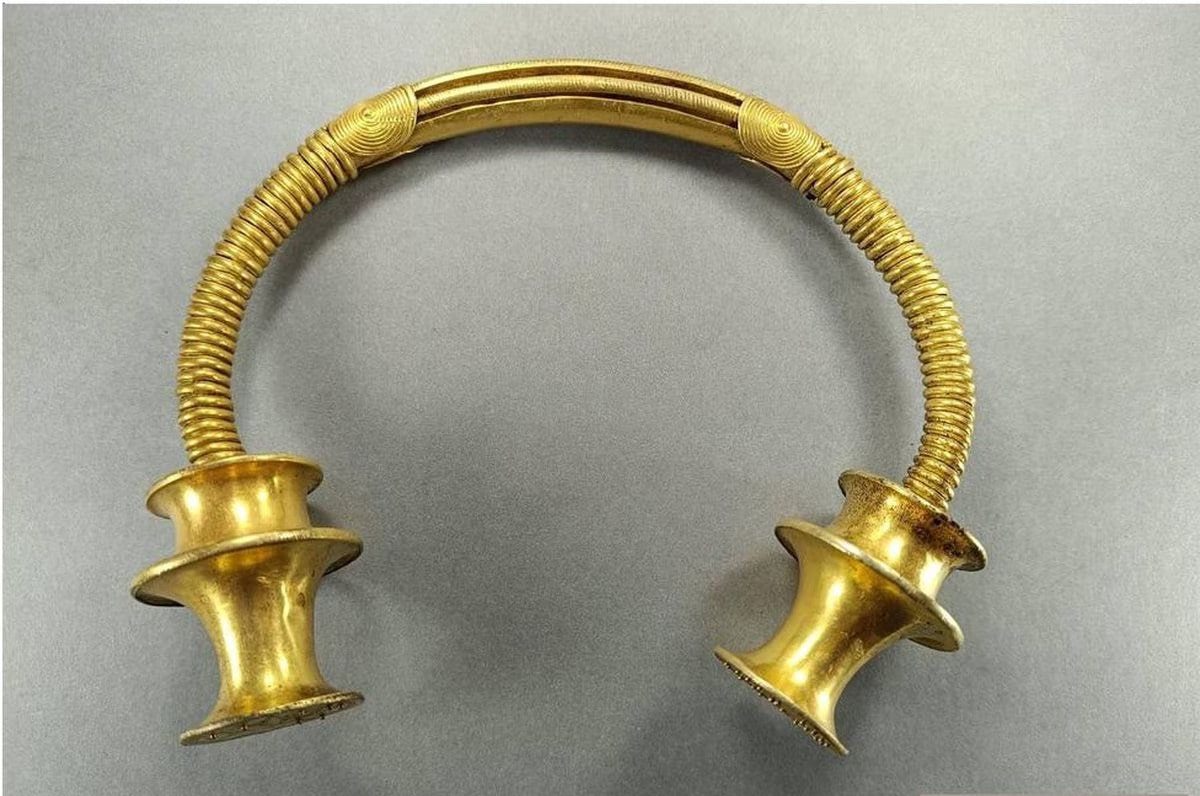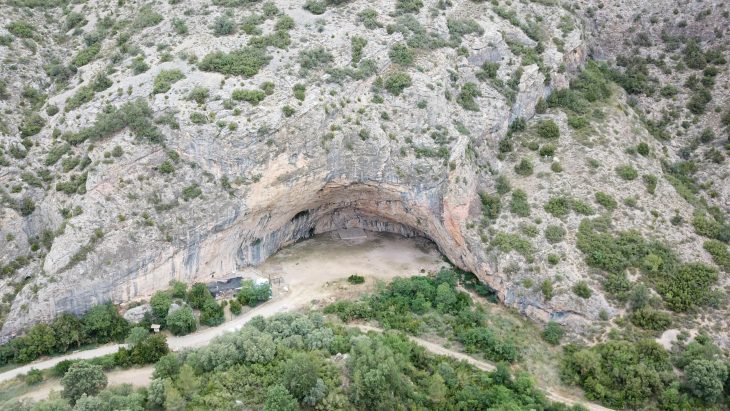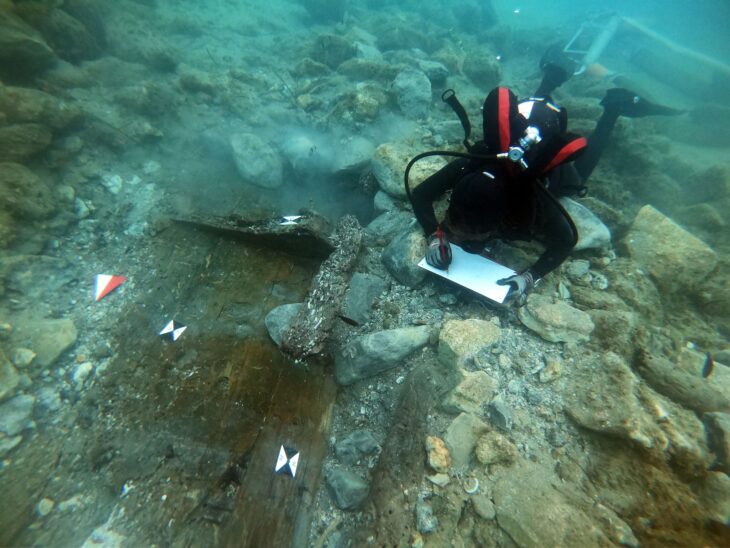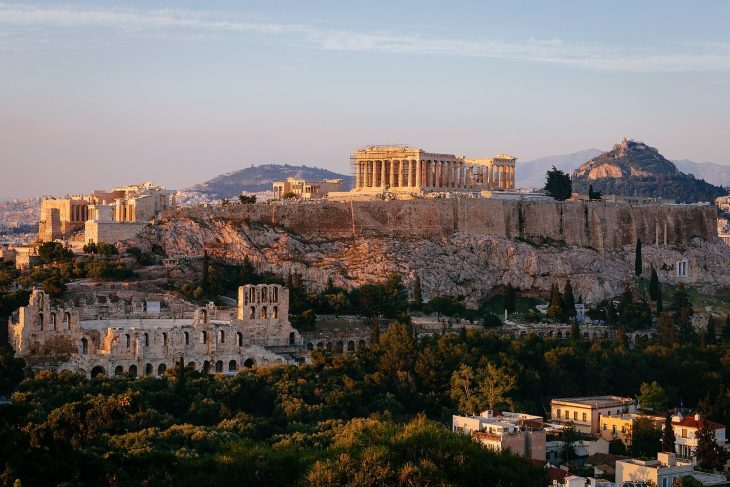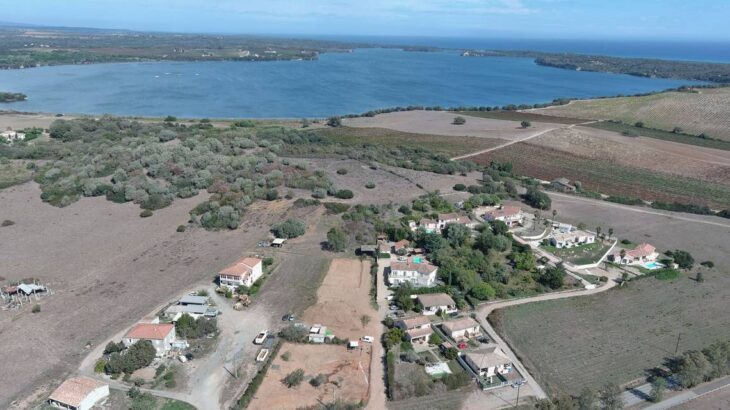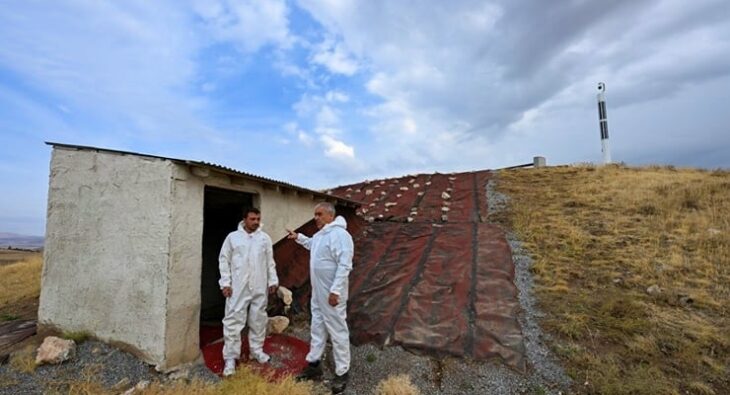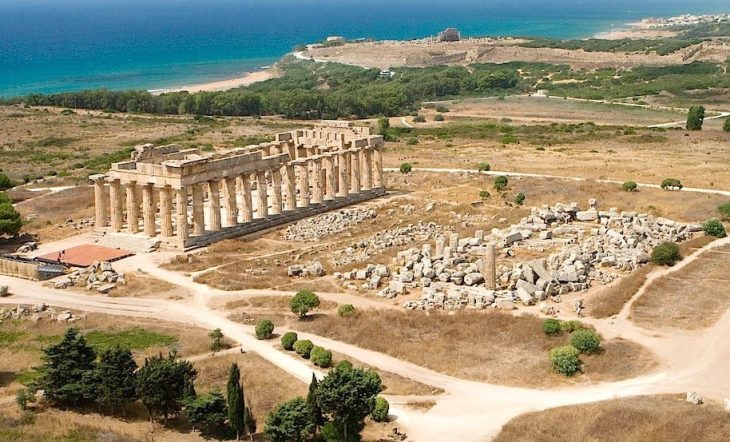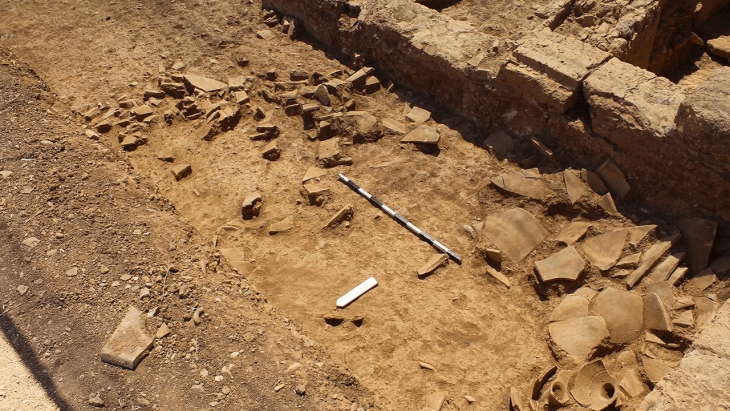A worker at a local water company in Spain discovered two gold necklaces thought to date back 2,500 years.
Sergio Narciandi was working on some pipes in the municipality of Cavandi in Asturias, northwest Spain on August 29 when he spotted a gold necklace among rocks, El País reported.
Picking up the gleaming object, he realized it was a torc—an ancient neck ornament similar to necklaces that was typically worn by nobles. He then discovered another similar piece of jewelry. They are thought to be from the Iron Age.
According to the newspaper ‘El País’, he picked him up and called the civil guard to give him instructions on what to do. They recommended that he notify the authorities and soon the professionals from the Archaeological Museum of Asturias, María Antonia Pedregal and Ángel Villa, and the professor of Prehistory at the University of Cantabria, Pablo Arias Cabal, arrived.
“Its will allow us to solve many enigmas about which we were missing data,” investigators into the find told El Pais. “It is a window that has been opened to a part of the history hitherto hidden from the Iron Age.”
📣 Our WhatsApp channel is now LIVE! Stay up-to-date with the latest news and updates, just click here to follow us on WhatsApp and never miss a thing!!
“This discovery is very important because, for the first time, we know the exact origin of two of these valuable objects, the maximum symbol of prestige for pre-Roman communities, and the context in which they were deposited.
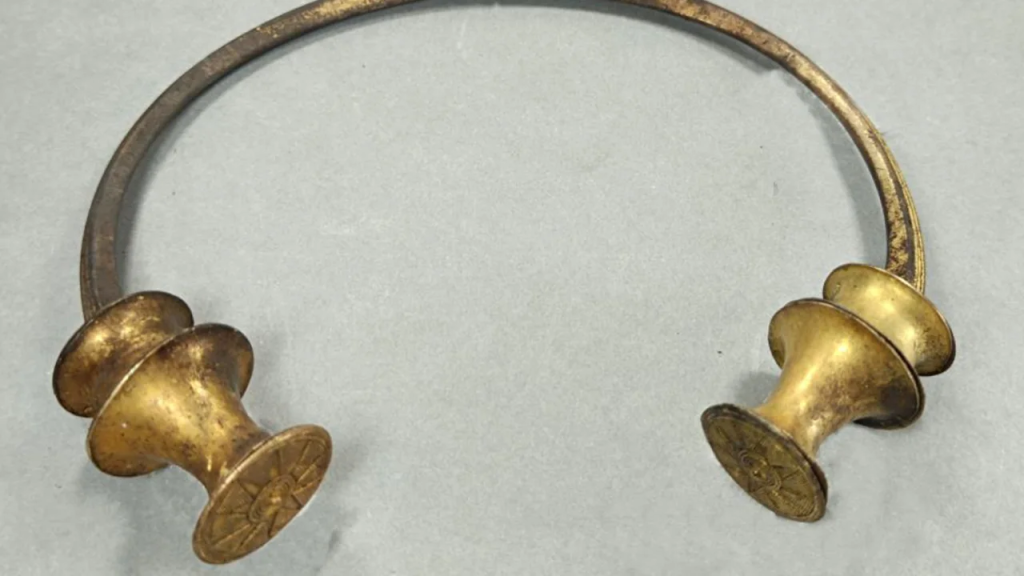
These pieces are extremely important, as they allow us to learn a little more about the customs of the time, its technology, its cultural roots, and its social organization, according to Ángel Villa, an expert at the Archaeological Museum of Asturias.
Dating the objects is difficult, but archaeologists believe they are unlikely to be more than 2,500 years old. Torcs were usually made of expensive materials and were most commonly worn by Celtic and Germanic nobles.
Ángel Villa, an expert at the Archaeological Museum of Asturias told El Pais that the torcs will be valuable in bringing archaeologists “closer to the knowledge of this era.”
“In both pieces, all the techniques of antiquity used by a goldsmith of extraordinary skill are concentrated: casting, filigree, graining and welding, combined with aesthetic and geometric motifs and styles, which now allows us to delve deeper into the aspects such as the dispersal of other pieces of which we were not sure of their real origin,” Villa said.
There were no other archaeological artifacts found around the same area.
Cover Photo: One of the torcs found in Asturias. Photo: Museo Arqueológico de Asturias

